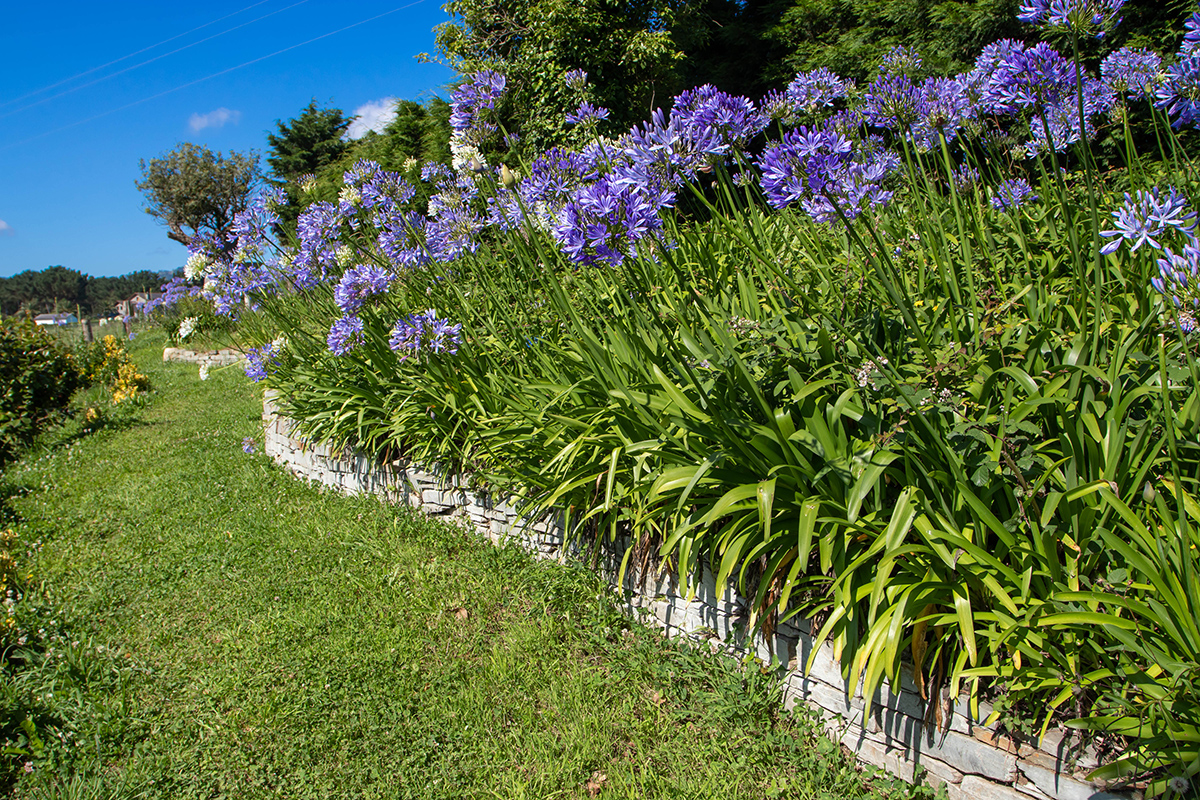Agapanthus Expanding Conditions: Dirt, Sunlight, and Watering
Agapanthus Expanding Conditions: Dirt, Sunlight, and Watering
Blog Article
Mastering the Art of Agapanthus Care: Essential Steps for Healthy Growth and Vibrant Flowers
In the realm of horticulture, the growing of agapanthus stands as a satisfying undertaking for those that look for to nurture these sophisticated blooming plants. From choosing the best range to grasping pruning methods, the trip towards cultivating flourishing agapanthus plants is complex and holds the crucial to opening the complete possibility of these herb gems.

Selecting the Right Agapanthus Variety

When picking the ideal Agapanthus variety for your garden, consider factors such as environment suitability, flower shade, and growth routine. In addition, consider the climate in your region to make certain the Agapanthus selection you select can grow in your details problems. Comprehending the development routine of various Agapanthus varieties is crucial for proper positioning within your yard.
Suitable Growing Conditions
Considering the optimal environmental requirements is essential for effective Agapanthus cultivation. Agapanthus plants are delicate to cold temperatures and must be protected from frost during winter season months.
To guarantee healthy development and lively blossoms, plant Agapanthus light bulbs at a depth of regarding 2-4 inches and room them 8-12 inches apart. Mulching around the base of the plants assists keep moisture and subdues weed growth.
Watering and Feeding Tips
Maintaining proper moisture levels and providing necessary nutrients are vital components in the treatment regimen for Agapanthus plants. When it comes to watering Agapanthus, it is important to strike an equilibrium. These plants prefer continually wet soil however are vulnerable to root rot if overwatered.
Feeding Agapanthus is necessary for advertising healthy development and prolific flowers. Apply a well balanced plant food, such as a 10-10-10 formula, in the early springtime as new growth arises. Repeat this application every 6-8 weeks throughout the expanding period. Stay clear of excessive fertilization, as it can result in lavish vegetation at the cost of blooms. Always comply with the manufacturer's directions for correct dilution and application methods. By complying with these watering and feeding pointers, you can guarantee your Agapanthus plants grow and create vivid, lasting flowers.
Pruning Methods for Agapanthus
Trimming Agapanthus plants at the suitable times and with appropriate strategies is essential for preserving their wellness and promoting optimum development and blooming. The excellent time to prune Agapanthus remains in late winter season or very early spring prior to brand-new development emerges. Beginning by removing any type of dead or yellowing leaves near the base of the plant. Cut them as short as possible without harming the arising shoots.
For flowered stems, wait up until the blossoms have actually withered and after that trim them back to the base. This not just cleans up the plant's look however likewise encourages the development of new blossom buds. Deadheading spent flowers can also reroute the plant's energy into generating even more blooms as opposed to setting seeds. However, if you intend to gather seeds for breeding, leave some flowers to mature and dry on the plant.
Remember to utilize clean, sharp tools to read make precise cuts and minimize the danger of presenting illness. Agapanthus. Normal pruning will aid keep your Agapanthus looking healthy and cool while making certain an abundant screen of stunning flowers
Taking Care Of Common Parasites and Illness
After guaranteeing proper pruning strategies for Agapanthus, it is essential to deal with typical parasites and illness that can influence the health and wellness and vigor of these plants. One usual parasite that influences Agapanthus is the Agapanthus gall midget.
Furthermore, Agapanthus plants can experience from root rot if they are planted in improperly draining soil. By being alert and taking timely action against have a peek at this website pests and diseases, you can help your Agapanthus plants thrive and generate vivid blossoms. Agapanthus.

Conclusion
Finally, mastering the art of agapanthus treatment involves selecting the appropriate variety, giving excellent growing conditions, correct watering and fertilizing, suitable pruning techniques, and addressing typical pests and illness. By following these important steps, you can guarantee healthy development and dynamic blossoms for go to this site your agapanthus plants. Bear in mind to regularly keep an eye on and maintain your plants to advertise their general wellness and longevity.
To make certain healthy and balanced development and dynamic blossoms, plant Agapanthus bulbs at a deepness of concerning 2-4 inches and room them 8-12 inches apart. By following these watering and feeding ideas, you can ensure your Agapanthus plants flourish and produce vibrant, long-lasting blossoms.
One typical bug that affects Agapanthus is the Agapanthus gall midget. Furthermore, Agapanthus plants can endure from origin rot if they are planted in inadequately draining dirt. By following these vital actions, you can guarantee healthy and balanced development and lively flowers for your agapanthus plants.
Report this page